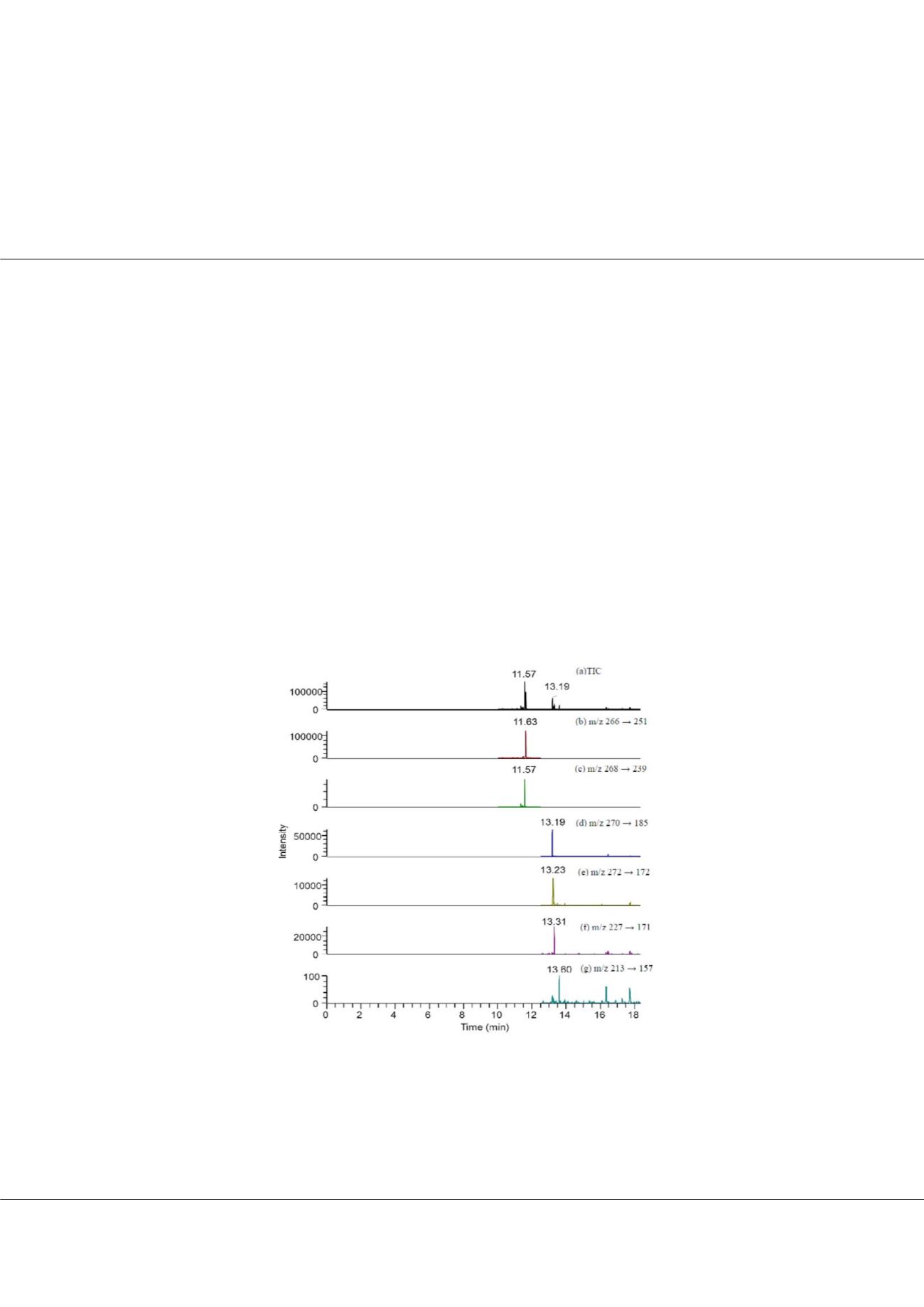

Page 64
conferenceseries
.com
Volume 8, Issue 5 (Suppl)
J Chromatogr Sep Tech, an open access journal
ISSN: 2157-7064
Chromatography 2017
August 07-09, 2017
August 07-09, 2017 | Rome, Italy
4
th
World Congress on
Chromatography
Liquid phase micro-extraction
in-situ
derivatization for determination of estrogens in water by gas
chromatography-tandem mass spectrometry
Maw-Rong Lee, Yi-Yu Chen
and
Chung-Yu Chen
National Chung Hsing University, Taiwan
E
ndocrine disrupting chemicals (EDCs) in environmental aqueous system have gained global attention because they may
interfere with central regulatory functions by antagonizing or mimicking the effects of endogenous hormones, even
at extremely low concentrations. In human life, the use of estrogens, the group of steroidal hormones of EDCs, in animal
feeds, contraceptives, and hormone replacement therapy drugs is increasing dramatically. Estrogens enter the human living
environment may cause many diseases such as breast and prostate cancers. Hence, to develop efficient analytical method for
determination of estrogens in aquatic samples is important. This study develops liquid phase micro-extraction (LPME)
in situ
derivatization combined with gas chromatography-tandem mass spectrometry (GC-MS/MS) for analyzing of trace estrogens
in aquatic samples. The targeted estrogens include mestranol (MES), dienstrol (DIE), diethylstilbestrol (DES), estrone (E1),
17α-estradiol (17α-E2), and 17α-ethinylestradiol (17α-EE). 11.25 mL pH adjusted (pH 6) water sample containing 5% sodium
chloride was mixed with 3.75 mL dansyl chloride derivatization agent. After derivatization, the derivatives were extracted by
LPME with octanol as extraction solvent and the extractant was detected by GC-MSMS. The linearity of the proposed method
ranged between 0.05 to 50 ng/mL. The detection limits (LODs) of targeted estrogens were between 0.3 to 1.1 ng/mL. The
feasibility of applying the proposed method to analyze the six estrogens in aqueous samples was also examined. The results
showed the method proposed is suitable for determination of trace estrogens in environmental water samples.
Biography
Maw-Rong Lee has his expertise in developing new analytical techniques using modern instrumentation and sample preparation methods, and the applications
of these techniques in areas such as environmental, clinical, and forensic chemistry. His special research interests include Mass Spectrometry, Tandem Mass
Spectrometry and Integrated Separation/Identification Techniques. He is also interested in using tandem mass spectrometry to study ion molecule reaction, proton
affinity in gas phase. The sample preparation methods used are LPME, SPME, SPE, microwave and SFE.
mrlee@dragon.nchu.edu.twMaw-Rong Lee et al., J Chromatogr Sep Tech 2017, 8:5(Suppl)
DOI: 10.4172/2157-7064-C1-032
















